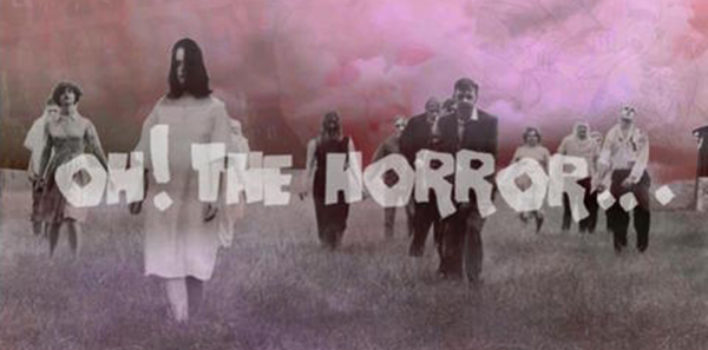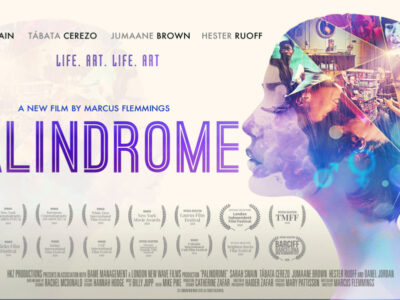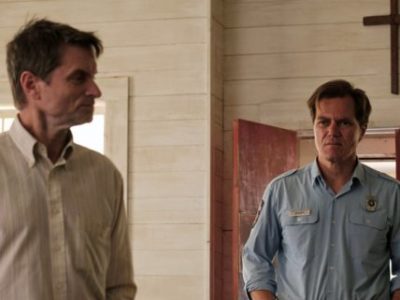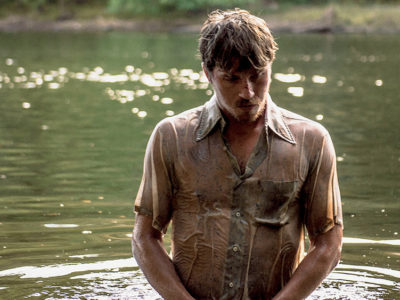Oh! The Horror… | of Double Features
I am so pleased this week to be collaborating with a good friend of mine, Joseph Nooft, who is a contributor for Mockingbird. We wanted to bring to you a couple of suggestions each for some double features—a non-horror film paired with a horror film—that will introduce you to good horror if you are not a fan of horror and will give fans of horror a new lens in which to view some of their favorite genre films. We hope you enjoy these pairings!
If You Liked No Country For Old Men (2007), You Might Like Halloween (1978) – Blake Collier
 Cormac McCarthy has this ability to write villains that, for all intents and purposes, appear to be human in form and, yet, the nature of their implicit threats to the protagonists in his stories seems to transcend into cosmic proportions. Their dread seems more god-like than their form may give away. Chigurth (played by Javier Bardem) strikes this balance as a coin-flipping, dealer of human fates out on the plains of West Texas. He is man and other, simultaneously. The beauty of the Coens’ adaptation of the film is in their ability to draw out the feeling that the all-too-human characters who cross his path are up against something they are not able to control nor completely understand or stop. He is a force of nature, a whirlwind of fatalism and death.
Cormac McCarthy has this ability to write villains that, for all intents and purposes, appear to be human in form and, yet, the nature of their implicit threats to the protagonists in his stories seems to transcend into cosmic proportions. Their dread seems more god-like than their form may give away. Chigurth (played by Javier Bardem) strikes this balance as a coin-flipping, dealer of human fates out on the plains of West Texas. He is man and other, simultaneously. The beauty of the Coens’ adaptation of the film is in their ability to draw out the feeling that the all-too-human characters who cross his path are up against something they are not able to control nor completely understand or stop. He is a force of nature, a whirlwind of fatalism and death.
This is exactly why one of John Carpenter’s masterpieces, Halloween, might be able to scratch a similar itch as No Country for Old Men. Michael Myers strikes a similar cinematic figure as Chigurth does, except Myer’s doesn’t leave his victims dispatching to the indifferent flip of a coin. Instead, he is could be considered the sheer manifestation of Karma or the Biblical Law. One bad deed or sin and he becomes the curse unto death for those who transgress. They are both relentless in their pursuit. It does not matter if you run or fight back or stand in defiance of their will, they will find you and they will enact their impersonal justice. Both of these films trade in the iconography of a revelation from beyond the veil of human comprehension. Perhaps a type of anti-Christ that shows no grace or mercy, only judgment. The human body count is left precariously in their wake.
If You Liked Mrs. Doubtfire (1993), You Might Like The Babadook (2014) – Joseph Nooft
 If you love Robin William’s classic 1993 family comedy Mrs. Doubtfire, then you should give 2014’s scariest film,The Babadook, a chance. As one of 2014’s top films, The Babadook surprised critics everywhere enough to have its merit hailed even outside of the horror-flick faithful’s outcries. Plainly put, it’s just a good film. Telling the haunting story of a single mother, Amelia, and her son, Samuel, who are preyed upon by a demon-like ghoul straight out of a children’s book,The Babadook effectively pairs the nightmarish, adolescent fears of what goes bump in the night with the pragmatic, how-to-survive-in-the-real-world fears of being a grownup.
If you love Robin William’s classic 1993 family comedy Mrs. Doubtfire, then you should give 2014’s scariest film,The Babadook, a chance. As one of 2014’s top films, The Babadook surprised critics everywhere enough to have its merit hailed even outside of the horror-flick faithful’s outcries. Plainly put, it’s just a good film. Telling the haunting story of a single mother, Amelia, and her son, Samuel, who are preyed upon by a demon-like ghoul straight out of a children’s book,The Babadook effectively pairs the nightmarish, adolescent fears of what goes bump in the night with the pragmatic, how-to-survive-in-the-real-world fears of being a grownup.
In appropriately rationing its jump scares and monster revelations, the film finds establishes its true terror in its well constructed narrative, which presents a commentary of a parent’s self-justifying struggle to appropriately provide for her family, similarly to, you guessed it, Mrs. Doubtfire.
Mrs. Doubtfire is built along the premise of an estranged father who has lost sight of what’s most important in his life: his family. Like anything worth fighting for, William’s character, Daniel Hillard/Mrs. Doubtfire doesn’t know what he’s got until it’s gone. When Daniel’s wife, Miranda, who is terrifically played by the always magnetic Sally Field, finally decides that it’s time to separate, Daniel will go to any length to establish a personal connection with his family; even if it means curating a completely new, female identity (culturally relevant much?). Robin Williams was a brilliant impressionist, so the tropes that follow his transformation into an elderly woman are gut-busting. However, as is with all meaningful satire, there’s an element of horror that lies underneath Hillard’s disguise. In between the laughs exists the possibility that Hillard could lose his family. Forever. Here lies the parallel between The Babadook and Mrs. Doubtfire: the construction of additional identities to preserve family. In The Babadook, the film’s supporting cast aids the monster’s consternation. The peers, the neighbors, the friends, the teachers who consistently dump pounds of guilt onto a single mother’s struggle to care for her son, so much so that she struggles to maintain sanity. The Babdook exists to reveal her flaws, her struggles as a human being, a person with flaws. Eventually both Hillard and Amelia discover the horrifying truth that their paper-thin identity bunkers are not built to last.
If You Liked Blow Out (1981), You Might Like Berberian Sound Studio (2012) – Blake Collier
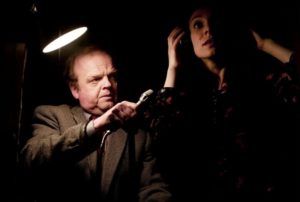 One of the most powerful elements of cinema is how it can invite viewers into various circumstances, atmospheres and narratives in various different experimental ways as film is a medium that incorporates the cohesion of sight and sound. Brian De Palma’s masterpiece, Blow Out, finds a sound engineer (played by John Travolta) increasingly inculcated within a conspiracy to murder a presidential candidate. However, it is the means by which he happens upon the conspiracy that is a piece of cinematic brilliance. Jack Terry has recorded the audio of the car wreck in which the candidate was ultimately killed. What he hears over and over again on the recording is something that does not fit the official story given by police and the media. Ultimately, Terry descends into obsession and, by the end of the film, becomes numb because of his inability to ultimately make good on the obsession and prove the conspiracy to be true.
One of the most powerful elements of cinema is how it can invite viewers into various circumstances, atmospheres and narratives in various different experimental ways as film is a medium that incorporates the cohesion of sight and sound. Brian De Palma’s masterpiece, Blow Out, finds a sound engineer (played by John Travolta) increasingly inculcated within a conspiracy to murder a presidential candidate. However, it is the means by which he happens upon the conspiracy that is a piece of cinematic brilliance. Jack Terry has recorded the audio of the car wreck in which the candidate was ultimately killed. What he hears over and over again on the recording is something that does not fit the official story given by police and the media. Ultimately, Terry descends into obsession and, by the end of the film, becomes numb because of his inability to ultimately make good on the obsession and prove the conspiracy to be true.
Enter 2012’s Berberian Sound Studio—the second feature film by director Peter Strickland—where Toby Jones’ Gilderoy, also a sound engineer, is hired to do the sound effects and mixing for what turns out to be an Italian giallo film in the vein of Dario Argento. The beauty of the film is that the contents of the film being worked on are kept invisible to the audience with out the character’s reactions and the sound effects Gilderoy is creating to give us a sense of what is happening on the screen. In much the same way as Jack Terry, Gilderoy finds himself descending into obsession and paranoia where the boundaries between reality and film begin to crumble. The element that makes these two films a phenomenal pairing is how they are able to toy with the audiences’ expectations and sensory information by isolating the auditory elements of the film and story from the visual in truly creative ways. These two films not only make entertainment but they are in their own way deconstructing the way we experience film, all the while giving solid tension and release.
If You Liked Like Crazy (2011), You Might Like Honeymoon (2014) – Joseph Nooft
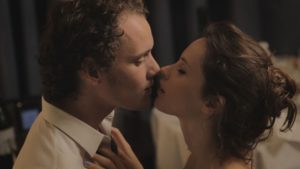 Scripture tells us that love is patient and kind, that it does not envy or boast, and that it isn’t proud, and so on and so forth. I’ve always read that passage as a bit of a taunt. Its tone implies that our love is flawed, imperfect, and, often times, infatuation or idolatry. This definition of true love, whether it be between man and woman, or human and God, should instill a level of fear within all of those who soberly read its words for what they’re worth. It is doubtful that any living or deceased person has been able to flawlessly replicate this brand of balanced, selfless love, adding pain and sadness to our relationships. For evidence, examine how your favorite rom-com or drama’s conflict can instill a dynamic sense of sadness in you. This is why I’d suggest that if 2011’s indie romance Like Crazy made you feel some type of way, you may thoroughly enjoy the 2014 thriller, Honeymoon.
Scripture tells us that love is patient and kind, that it does not envy or boast, and that it isn’t proud, and so on and so forth. I’ve always read that passage as a bit of a taunt. Its tone implies that our love is flawed, imperfect, and, often times, infatuation or idolatry. This definition of true love, whether it be between man and woman, or human and God, should instill a level of fear within all of those who soberly read its words for what they’re worth. It is doubtful that any living or deceased person has been able to flawlessly replicate this brand of balanced, selfless love, adding pain and sadness to our relationships. For evidence, examine how your favorite rom-com or drama’s conflict can instill a dynamic sense of sadness in you. This is why I’d suggest that if 2011’s indie romance Like Crazy made you feel some type of way, you may thoroughly enjoy the 2014 thriller, Honeymoon.
Like Crazy is a melodramatic saga that follows the evolving relationship between Jacob, played by the late Anton Yelchin, and Anna, played by Felicity Jones. In the film, the two quickly develop a romantic bond in college, but when Anna, who is English, decides to outstay her visa to pursue a future with Jacob, she gets deported, and their relationship gets dicey as the couple experiences various ups and downs as the fight to remain together. In Honeymoon, the film’s couple, Bea and Paul, has surpassed Like Crazy’s Anna and Jacob. They’ve married, and are, you guessed it, set to enjoy their honeymoon. The linkage between the two films comes through an introspective look into a question that haunts many relationships: “What next?” In Like Crazy, the moments when Anna and Jacob do find time together are cherished, but they also feel empty. A tremendous amount of effort is poured into the initiation of their interactions, each one of them separated by weeks and months. When they do meet, the couple sees that the person they have worked so hard to connect with may not be the same person that stands in front of them. Honeymoon deploys a near identical message, albeit through a much creepier lens. Director Leigh Janiak gradually evolves Bea so that with each passing minute she becomes a more and more elusive character; a monster, even, in the eyes of her new husband. Both Like Crazy and Honeymoon unveil an honest, human fear of the unknown; of the mutation that threatens reshape a relationship.


